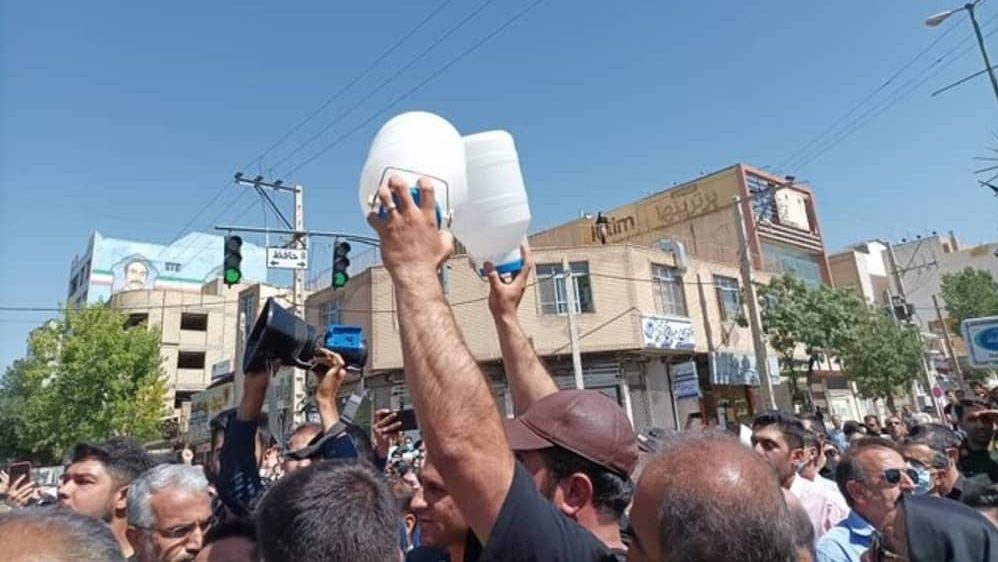Meet the man who helps keep Akron’s drinking water safe – Signal Akron

Report on Watershed Management and Sustainable Development Goal Implementation by the Akron Water Supply Bureau
Introduction
This report details the activities of the Akron Water Supply Bureau’s watershed division in managing and protecting the Upper Cuyahoga River Watershed. The division’s work is fundamental to ensuring a safe and reliable water supply for approximately 300,000 residents in Akron and surrounding areas. These efforts show a strong alignment with several United Nations Sustainable Development Goals (SDGs), particularly SDG 6 (Clean Water and Sanitation), SDG 15 (Life on Land), and SDG 14 (Life Below Water).
Contribution to SDG 6: Clean Water and Sanitation
The core mission of the watershed division is the protection of the region’s primary water source, directly contributing to SDG Target 6.1: achieve universal and equitable access to safe and affordable drinking water. This is accomplished through a comprehensive management program for the nearly 20,000-acre watershed.
Water Quality Monitoring and Management
To ensure water safety, a team of specialists, including water protection specialist Mike Toth and lab analysts Charles Lacy and Robert Holmes, conducts rigorous and consistent monitoring of Lake Rockwell, the city’s main drinking water reservoir. This work supports SDG Target 6.3 by improving water quality through the reduction of pollution.
- Systematic Sampling: Water sampling is conducted on a regular schedule, including bi-monthly tests for nutrient levels in Lake Rockwell.
- Advanced Data Collection: Field teams utilize data sondes and digital buoys to record a wide range of water quality parameters, including temperature, pH, conductivity, and chlorophyll levels.
- Data Analysis: Both manual and digital records are maintained to track water quality trends over time, allowing for proactive management decisions.
Pollution Control and Algae Mitigation
A primary operational focus is the management of nutrient pollution, which directly addresses SDG Target 14.1 regarding the reduction of land-based pollution, including nutrient pollution. High levels of phosphorus and nitrogen, often from agricultural fertilizers, can lead to harmful algal blooms.
- Upstream Management: The division works to mitigate nutrient runoff in the watershed upstream of Lake Rockwell.
- Targeted Intervention: When nutrient levels are high, algaecide is deployed from a specialized boat to control algae growth and protect the water supply.
- Emergency Response: The team is prepared to respond to unplanned pollution events, such as industrial spills or accidents, to prevent contamination of the river and reservoir.
Contribution to SDG 15: Life on Land
The bureau’s stewardship of the watershed extends beyond water quality to the health of the surrounding terrestrial and freshwater ecosystems, in direct support of SDG 15 (Protect, restore and promote sustainable use of terrestrial ecosystems).
Biodiversity Protection and Conservation
The watershed serves as a sanctuary for native flora and fauna. The division’s work includes the protection of significant and threatened species, which aligns with SDG Target 15.5 (Take urgent and significant action to reduce the degradation of natural habitats, halt the loss of biodiversity and, by 2020, protect and prevent the extinction of threatened species).
- A notable example is the protection of surviving American chestnut trees, a species nearly eradicated by blight a century ago. The presence of these trees indicates a high-quality, resilient ecosystem.
Ecosystem Restoration: The Eckert Ditch Project
The division actively restores degraded land to improve ecosystem function, a key component of SDG Target 15.1. A significant project was the restoration of an area bordering Eckert Ditch, a tributary that was a major source of nutrient pollution for Lake Rockwell due to a failing septic system and historical land use.
- Land Acquisition: In 2018, the division secured the polluted land through an EPA grant.
- Habitat Restoration: The previously channelized ditch was restored to a natural, meandering state, and the area was replanted with native wetland species such as swamp rose, hibiscus, and bur-reed.
- Improved Ecosystem Services: The restored wetland now functions as a natural filter, improving water quality before it reaches Lake Rockwell, and is on a trajectory to become a mature woodland habitat.
Land Stewardship
Ongoing land management is critical for maintaining the integrity of the watershed.
- Property Monitoring: Specialists regularly patrol the extensive property lines of the watershed to identify and address any encroachments.
- Community Engagement: The team engages with neighboring landowners to ensure land use practices are compatible with watershed protection goals.
Analysis of Sustainable Development Goals (SDGs) in the Article
1. Which SDGs are addressed or connected to the issues highlighted in the article?
-
SDG 6: Clean Water and Sanitation
This goal is central to the article. The entire narrative revolves around the work of Mike Toth and the Akron Water Supply Bureau to monitor and protect the Upper Cuyahoga River Watershed. Their primary mission is to “ensure safe drinking water for people in and around Akron,” which directly aligns with the core objective of SDG 6.
-
SDG 15: Life on Land
This goal is addressed through the article’s focus on protecting and restoring terrestrial and freshwater ecosystems. The efforts described go beyond just water quality to include the health of the entire watershed ecosystem. This includes protecting “densely wooded area[s],” managing land to prevent pollution, restoring a wetland at Eckert Ditch, and highlighting the importance of biodiversity with the example of the rare American chestnut tree.
2. What specific targets under those SDGs can be identified based on the article’s content?
-
Target 6.1: Achieve universal and equitable access to safe and affordable drinking water for all
The article explicitly states that the work of the Akron Water Supply Bureau is to “ensure safe drinking water for people in and around Akron,” serving a population of “300,000 people.” This is a direct local application of the global target to provide safe drinking water.
-
Target 6.3: Improve water quality by reducing pollution
The team’s activities are focused on improving water quality. They monitor for “harmful nutrients” like phosphorus and nitrogen, which often come from fertilizers. They also respond to pollution incidents, such as “manure being dumped upstream or 20,000 gallons of milk spilling into the river.” Their goal is to “mitigate the amount of harmful nutrients” that reach Lake Rockwell, which is a clear effort to reduce water pollution.
-
Target 6.6: Protect and restore water-related ecosystems
The article details a major restoration project at Eckert Ditch, a tributary that was a “main sources of bad nutrients in the lake.” The watershed division purchased the land and transformed it from a “channelized” ditch into a thriving wetland “rich with native plants.” This is a direct example of restoring a water-related ecosystem to improve its function and health.
-
Target 15.1: Ensure the conservation, restoration and sustainable use of terrestrial and inland freshwater ecosystems
The protection of the nearly 20,000-acre Upper Cuyahoga River Watershed is a clear example of conserving a freshwater ecosystem. The article notes that the City of Akron began “purchasing land around the Cuyahoga River more than 100 years ago” for this purpose. The restoration of the Eckert Ditch area, turning it from a degraded site with a “failing septic system” into a functional wetland that will eventually become woods, is a direct action towards this target.
-
Target 15.5: Take urgent and significant action to reduce the degradation of natural habitats, halt the loss of biodiversity and, by 2020, protect and prevent the extinction of threatened species
The article highlights the plight of the American chestnut tree, a species “wiped out, billions and billions and billions of them by a blight 100 years ago.” Toth’s reverence for the surviving tree signifies the importance of protecting threatened species and their habitats. Furthermore, the restoration project at Eckert Ditch involved re-establishing native plants like “swamp rose, duck weed, hibiscus, bur-reed,” which is an action to halt biodiversity loss and restore a natural habitat.
3. Are there any indicators mentioned or implied in the article that can be used to measure progress towards the identified targets?
-
Indicators for Water Quality and Access
The article mentions several direct and indirect indicators. The team uses a “data sonde” to record specific water quality parameters, including “temperature, chlorophyll levels, conductivity and pH.” They also monitor for “harmful nutrients” like phosphorus and nitrogen. These measurements directly contribute to assessing the ambient quality of water bodies (Indicator 6.3.2). The mention of providing water to “300,000 people” serves as a measure for the population using safely managed drinking water services (Indicator 6.1.1).
-
Indicators for Ecosystem Health and Biodiversity
Progress in ecosystem restoration is described qualitatively. The transformation of Eckert Ditch from a “channelized” stream to a wetland with “sinuosity” and rich with “native plants” indicates a change in the extent and quality of a water-related ecosystem (Indicator 6.6.1). The size of the protected watershed (“almost 20,000 acres”) serves as an indicator for the proportion of important freshwater sites under protection (Indicator 15.1.2). The focus on the rare American chestnut tree implies a concern for threatened species, which is measured globally by the Red List Index (Indicator 15.5.1).
4. Table of SDGs, Targets, and Indicators
| SDGs | Targets | Indicators Identified in the Article |
|---|---|---|
| SDG 6: Clean Water and Sanitation | 6.1: Achieve universal and equitable access to safe and affordable drinking water for all. | The service population of “300,000 people” receiving safe drinking water from the protected watershed. |
| 6.3: Improve water quality by reducing pollution. | Monitoring of water quality parameters (temperature, chlorophyll, conductivity, pH) and harmful nutrients (phosphorus, nitrogen); responding to pollution spills (manure, milk). | |
| 6.6: Protect and restore water-related ecosystems. | The restoration of Eckert Ditch from a channelized stream to a functional wetland ecosystem. | |
| SDG 15: Life on Land | 15.1: Ensure the conservation, restoration and sustainable use of terrestrial and inland freshwater ecosystems. | The protection of the “almost 20,000 acres” of the Upper Cuyahoga River Watershed; the purchase and restoration of land at Eckert Ditch. |
| 15.5: Halt the loss of biodiversity and protect threatened species. | Identification and protection of the rare American chestnut tree, a threatened species; reintroduction of native plants (“swamp rose, duck weed, hibiscus, bur-reed”) in a restored habitat. |
Source: signalakron.org

What is Your Reaction?
 Like
0
Like
0
 Dislike
0
Dislike
0
 Love
0
Love
0
 Funny
0
Funny
0
 Angry
0
Angry
0
 Sad
0
Sad
0
 Wow
0
Wow
0







































































